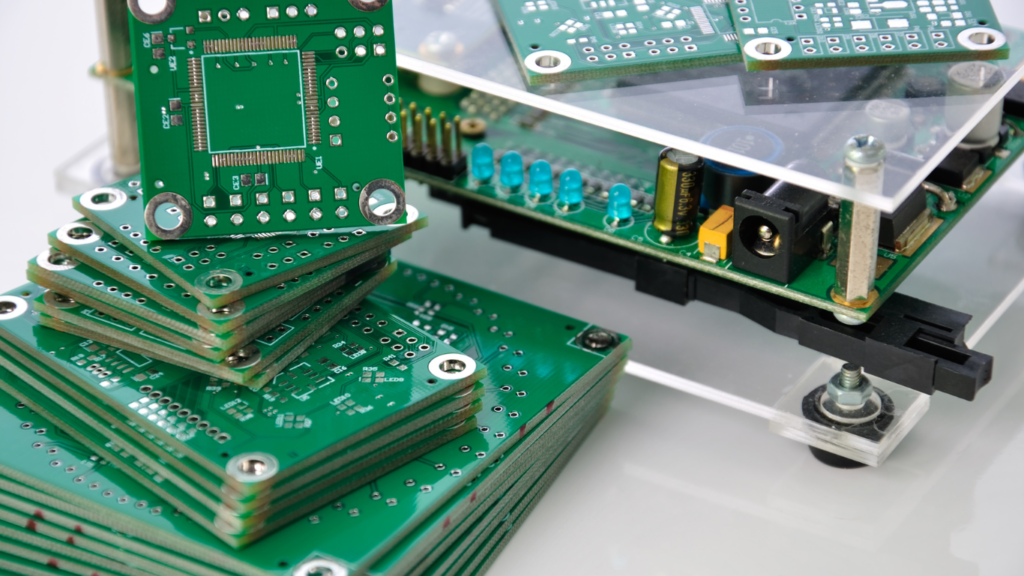
A Single-Sided PCB is the simplest type of printed circuit board (PCB) where all the electronic components and circuitry are placed on one side of the board. The other side is typically used for the PCB’s conductive traces, which are usually etched from copper. This type of PCB is often the go-to choice for simple and cost-effective electronic devices.
Key Features:
- One-Sided Layout: All components (resistors, capacitors, integrated circuits, etc.) are placed on a single side, while the conductive traces run underneath on the other.
- Cost-Effective: Single-sided PCBs are generally cheaper to produce due to their simple design and manufacturing process.
- Simple Design: Best suited for basic electronic circuits with fewer
- Lightweight: Due to the use of just one side for components and circuitry, they tend to be more lightweight than multi-layer boards.
Applications:
- Consumer Electronics: Single-sided PCBs are commonly used in basic consumer electronics such as calculators, toys, power supplies, and small appliances.
- Lighting and Display Systems: Simple LED drivers and basic display systems often use single- sided PCBs.
- Home Appliances: Many household electronic devices, such as washing machines, microwave ovens, and fans, incorporate single-sided PCBs.
While single-sided PCBs are ideal for low-cost and low-complexity applications, they may not be suitable for more complex circuits that require high-density connections or multiple layers of traces. For more advanced needs, multi-layer PCBs or double-sided boards are often recommended.
